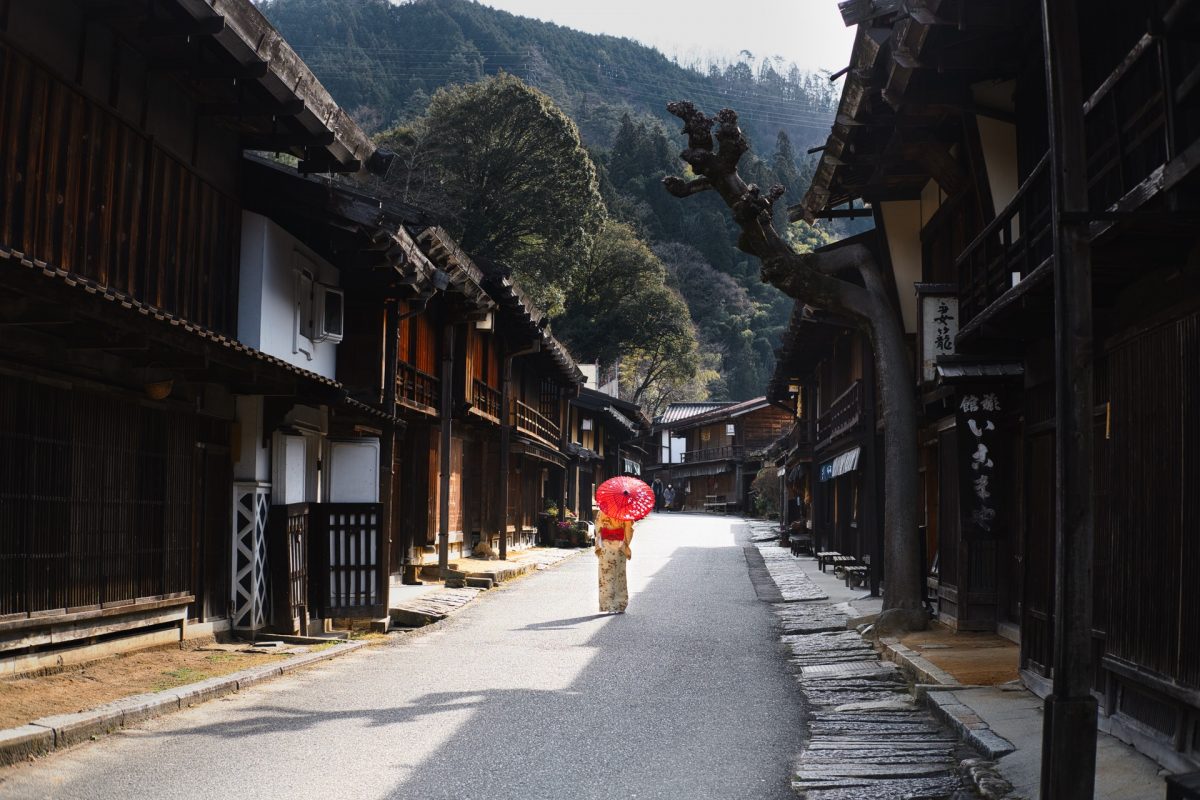See some of the traditions in the cherry and plum blossom viewing, the Buddhist and Shinto daily rituals, the hot springs and guest houses, and at the annual festivals. The samurai culture is highly respected, and the Emperor of Japan is still regarded as divine by a large percentage of the older population. The group-dependency culture lives on in schools, companies, and communities, and ‘saving face’ is an important lifestyle trait.
History
The history of Japan is long, unique, and blighted by many conflicts. The ancestors of the indigenous Ainu and Yamata people arrived on the islands around 12,000 BC. The country’s first permanent capital, Nara, was established in 710 AD, at the same time as the emergence of the present-day Imperial dynasty. Buddhism was introduced from China in the mid-6th century and the temples at Nara became a power in the land.
By the 16th century, the country was divided into feudal fiefdoms, controlled by powerful Daimyo families who were protected by their samurai warriors. Constant conflict and civil war flourished since 1467, with Imperial Kyoto, the Japanese capital since 794 AD, the prize to be claimed. The unrest spurred the rise of a new leader, Oda Nobunaga, who successfully entered Kyoto only to be forced to commit ritual suicide (seppuku). He was succeeded by a commoner, Toyotomi Hideyoshi, whose grand plan for the country’s reunification was taken over by Tokugawa Ieyasu on his death.
Finally at the battle of Sekigahara in 1600, Ieyasu’s samurai won and their master was established as Shogun. The Tokugawa Shogunate held power until the Meiji Restoration in 1868, ruling over a unified country which was completely closed off to the outside world. As part of the Meiji Restoration, the semi-divine Emperor’s powers were restored, and Tokyo became the seat of the Imperial dynasty. The country was open for trade and developed apace, although the same conflicts between powerful families continued, resulting in the rise of Japanese nationalism, which culminated in WWII with the attack on Pearl Harbor and led to Japan’s ultimate defeat in 1945.
Culture
Present-day Japanese culture is a fascinating mix of tradition and modernity as is observed in all aspects of everyday life. One unchanging concept is the “loss of face,” an idea which embodies personal dignity and peer status. Any conflict, criticism, insult, or request which cannot be fulfilled causes loss of face, and must be avoided at all costs. In society as a whole, harmony is the premier philosophy, essential in both family and business. Children are taught to value peace above their own needs, and are trained to work together rather than to aspire to be independent.
The resulting group-dependency relies heavily on body language in communication as words can have many underlying meanings. A passive facial expression is recommended for visitors, with eye contact discouraged as it invades the Japanese sense of privacy, invaluable in this crowded country. The hierarchy of status and age is important, with every person having his or her own place within the group. Formal greetings are standard (your name-san), and bowing the head is a sign of respect, although unwrapping a gift in the giver’s presence is not.
If you’re invited to a Japanese home for dinner, there’s a minefield of protocols to follow, beginning with the removal of your shoes before entering. Arrive on time, dress appropriately and conservatively, and wait to be told where to sit. Don’t point or pierce your food with your chopsticks, and try whatever is offered. If you don’t want second or third helpings, leave a little food in your bowl or drink in your glass as it’s good manners to never leave the guest with an empty plate. Finally, conversation while eating isn’t polite, as your hosts prefer to savor the food.

